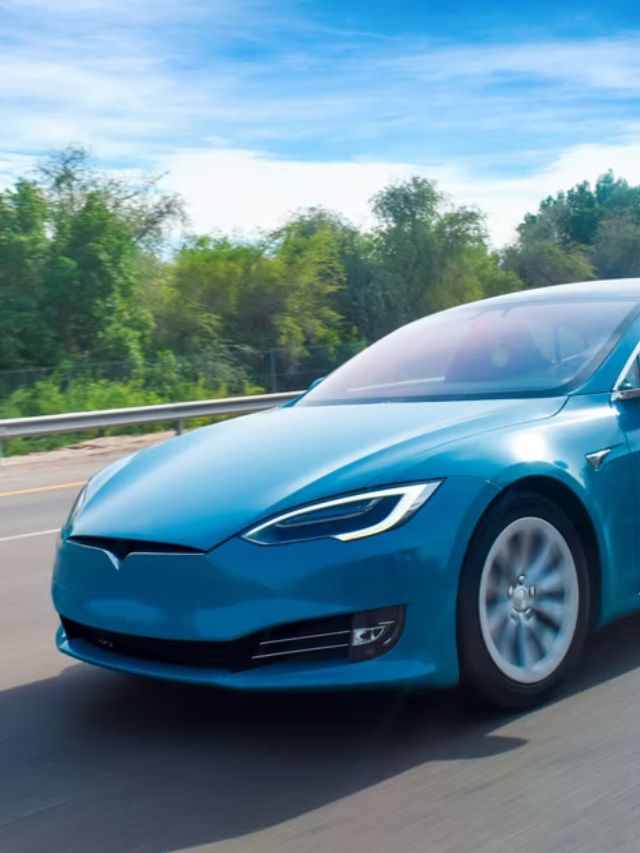Are Tesla Cars Profitable?
Are Tesla Cars Profitable? Let’s Dive In
If you’ve been following the electric vehicle (EV) industry, you might have asked yourself, “Are Tesla cars profitable?” It’s a great question, especially when you consider how many people believe electric cars are a luxury that don’t necessarily make sense for automakers in terms of profit. But with Tesla, the answer isn’t so straightforward. Let’s break down the financial side of things and see if Tesla cars are really making money for the company.
What Makes Tesla Different from Traditional Car Companies?
Before we get into whether or not Tesla cars are profitable, let’s first understand what sets Tesla apart from other car manufacturers. Unlike traditional automakers, Tesla focuses entirely on electric vehicles (EVs). The company doesn’t produce gas-powered cars, which means it’s focusing its efforts on a single type of vehicle. But Tesla isn’t just an automaker—it’s also a tech company, and that tech focus has given it a competitive edge in several ways.
High-Performance Electric Vehicles
One of the main reasons Tesla has been able to achieve profitability is due to the performance of its cars. Tesla’s electric vehicles are not just eco-friendly; they’re fast, sleek, and technologically advanced. This combination of performance and sustainability has made Tesla a highly desirable brand. Tesla’s Model S, Model 3, Model X, and Model Y are all known for their impressive acceleration, range, and innovative features like Autopilot. This has helped Tesla create a loyal customer base willing to pay a premium for their vehicles.
Are Tesla Cars Profitable? The Financial Breakdown
Now, let’s get to the question at hand—are Tesla cars profitable? To answer that, we need to look at Tesla’s financial performance over the years. Tesla has been making waves in the industry, but it hasn’t always been smooth sailing. There were times when the company was on the brink of bankruptcy, and many critics doubted whether it could ever turn a profit.
Tesla’s Financial History: From Losses to Profitability
In the early days, Tesla struggled financially. The company faced numerous challenges, including high production costs, delays in vehicle deliveries, and significant investments in research and development (R&D). For years, Tesla posted losses as it built up its infrastructure and expanded its product lineup.
However, things started to change in 2019. Tesla’s Model 3 gained significant traction in the market, and the company’s production efficiency improved. By 2020, Tesla posted its first-ever full-year profit, and it hasn’t looked back since. In fact, Tesla has been posting consistent profits, and its stock price has skyrocketed. But how exactly has Tesla managed to turn a profit while many other automakers are struggling to make EVs profitable?
How Tesla Makes Money
Tesla’s profitability is a result of a combination of factors. Let’s take a closer look at how Tesla generates revenue:
- Vehicle Sales: The bulk of Tesla’s revenue comes from the sale of its electric vehicles. Tesla has been able to produce high-demand models like the Model 3 and Model Y at scale, which has allowed the company to generate significant sales revenue.
- Energy Products: Tesla isn’t just a car company. The company also sells solar panels and battery storage systems through its energy division. These products are helping to diversify Tesla’s revenue streams and provide a more stable source of income.
- Software and Services: Tesla also generates revenue through software sales and service offerings. Tesla’s Autopilot and Full Self-Driving (FSD) features are sold as upgrades, generating recurring revenue. Additionally, the company provides maintenance and service packages for its vehicles.
Profit Margins: Tesla’s Competitive Edge
When it comes to profitability, profit margins are key. Tesla has managed to achieve higher profit margins compared to traditional automakers. While traditional car companies typically operate on profit margins of 5-10%, Tesla has been able to achieve margins of 20% or more on some of its vehicles. This is due to several factors, including:
- Vertical Integration: Tesla has chosen to keep much of its production in-house, which reduces costs and increases control over the manufacturing process.
- Lower Production Costs: As Tesla scales up its production, the company has been able to reduce the cost of manufacturing. This helps improve profitability.
- Innovation and Efficiency: Tesla’s focus on innovation has allowed it to streamline its production process, which results in lower costs and higher margins.
Is Tesla Profitable Long-Term?
Looking ahead, is Tesla’s profitability sustainable? While there’s no guarantee that Tesla’s profits will continue to grow indefinitely, the company is in a strong position. Tesla is continuing to expand its global presence, and as the demand for electric vehicles grows, Tesla is poised to capture an even larger market share.
Global Expansion
Tesla’s expansion into international markets, such as China and Europe, will play a major role in its long-term profitability. In particular, China is a key market for Tesla, as it is the world’s largest EV market. Tesla has already built a massive Gigafactory in Shanghai, and the company is continuing to expand its footprint in the region. This global expansion will help Tesla increase its vehicle sales and improve its economies of scale, which should help maintain profitability.
EV Adoption and Future Demand
The global shift toward electric vehicles is another major factor in Tesla’s future profitability. As governments around the world push for carbon-neutral transportation and stricter emissions regulations, demand for electric vehicles is expected to increase. Tesla, as the leader in the EV space, is well-positioned to benefit from this growing demand.
Cost Reductions and Continued Innovation
One of Tesla’s key strategies for maintaining profitability is its focus on reducing production costs. As the company continues to innovate with new technologies and scale up production, it will be able to produce vehicles more efficiently and at lower costs. This will allow Tesla to maintain its competitive edge in the market while still generating healthy profits.
Conclusion: Are Tesla Cars Profitable?
So, are Tesla cars profitable? The answer is a resounding yes. After years of struggling to turn a profit, Tesla has successfully built a profitable business model, driven by its high-demand vehicles, innovative technology, and expanding revenue streams. The company’s consistent profitability, high margins, and strong market position suggest that Tesla is here to stay, and its cars are indeed profitable for the company.
As Tesla continues to scale, innovate, and expand, its long-term profitability looks bright. The shift to electric vehicles is just beginning, and Tesla is leading the charge. So, while the road to profitability was not always smooth, Tesla has certainly made it, and it’s likely to remain a major player in the automotive and energy industries for years to come.

The Role of Tesla’s Innovation in Profitability
How Tesla Stays Ahead in the EV Market
One of the key factors that make Tesla profitable is its continuous innovation. From the launch of the Model S to the introduction of the Cybertruck, Tesla’s ability to stay ahead of the competition in terms of technology has kept it in a dominant position. As the EV market grows, Tesla’s innovation is crucial for maintaining its leadership and ensuring its vehicles remain in high demand.
Battery Technology and Cost Reduction
A major area where Tesla has made significant strides is in battery technology. Batteries are a crucial component of electric vehicles, and they also account for a large portion of the cost to produce an EV. Tesla has made tremendous progress in making its batteries more affordable and longer-lasting. The development of its 4680 battery cells promises to bring down production costs even further, which will allow Tesla to offer more affordable vehicles without sacrificing profitability.
In addition to cost savings, Tesla’s battery technology is also increasing the range and performance of its cars. The ability to drive longer distances on a single charge makes Tesla cars more appealing to customers, further driving demand and increasing profitability.
Autopilot and Full Self-Driving (FSD) Technology
Another area where Tesla stands out is its self-driving technology. Tesla’s Autopilot and Full Self-Driving (FSD) capabilities are major selling points for its vehicles. These features not only enhance the driving experience but also provide a new revenue stream for the company. Tesla sells Autopilot as an optional upgrade for its vehicles, generating significant additional income. As the technology evolves and becomes more advanced, Tesla will likely see even greater demand for these features, further boosting profitability.
Software Updates and Recurring Revenue
One of the unique aspects of owning a Tesla is the ability to receive over-the-air software updates. These updates improve vehicle performance, add new features, and sometimes even offer enhancements to Autopilot and FSD capabilities. This ability to continuously improve and update vehicles without requiring a visit to the dealership has made Tesla’s business model even more profitable.
These software updates not only add value to Tesla owners but also serve as a source of recurring revenue for Tesla. Whether it’s through the purchase of new features or ongoing service contracts, Tesla benefits from a continuous stream of income from its customers.
How Tesla’s Scale Helps With Profitability
As Tesla has grown, its ability to scale production efficiently has played a huge role in its profitability. By increasing the volume of cars produced and delivered, Tesla has been able to reduce the cost per vehicle and improve its margins. Let’s look at how scaling impacts Tesla’s profitability.
Gigafactories: Scaling Up Production
One of Tesla’s biggest advantages is its global network of Gigafactories. These massive manufacturing plants allow Tesla to produce vehicles, batteries, and energy products at a large scale. The more Tesla can produce, the lower its production costs become. This is why scaling production has been a key factor in increasing profitability.
By building Gigafactories in key markets, including the United States, China, and Germany, Tesla has been able to produce vehicles closer to its customers, reducing logistics costs and improving its delivery times. As Tesla continues to scale its production capabilities, its margins will improve even further.
Economies of Scale and Profit Margins
Economies of scale refer to the cost advantages that come with increasing the scale of production. As Tesla continues to grow, it can benefit from these cost advantages, resulting in better profit margins. Tesla has already achieved impressive profit margins, and as it expands its production capacity, those margins will likely continue to grow. This is a key factor that allows Tesla to remain profitable even as it invests heavily in new technology and expands globally.
Reducing Costs and Maximizing Profitability
Another way Tesla is increasing its profitability is by focusing on cost reduction. From manufacturing efficiencies to supply chain optimization, Tesla is constantly looking for ways to reduce its costs while maintaining high quality. For example, Tesla’s move to produce its own battery cells with the 4680 technology is expected to significantly reduce battery costs in the long run. Additionally, Tesla is also working on reducing the cost of materials and components used in its vehicles, which will further improve profitability.
Challenges to Tesla’s Long-Term Profitability
While Tesla is currently profitable, it’s important to recognize that there are challenges that could affect its long-term profitability. As Tesla expands its market share, it faces increasing competition from traditional automakers like Ford, General Motors, and Volkswagen, as well as new entrants like Rivian and Lucid Motors. These companies are investing heavily in electric vehicles, which could lead to price pressures and reduced margins for Tesla.
Competition in the EV Market
The EV market is becoming more crowded, and as competition increases, Tesla could face challenges in maintaining its market dominance. Traditional automakers with established brand loyalty and manufacturing capabilities could pose a significant threat to Tesla’s profitability. However, Tesla’s brand recognition, technology, and scale give it an edge, and it’s likely that the company will continue to innovate to stay ahead of the competition.
Rising Raw Material Costs
Another potential challenge to Tesla’s profitability is the rising cost of raw materials, particularly lithium, which is essential for EV batteries. As the demand for electric vehicles increases globally, the cost of these materials could rise, affecting Tesla’s production costs. Tesla will need to find ways to mitigate these costs, whether through improved battery technology, recycling, or securing more affordable sources of raw materials.
Conclusion: Tesla’s Profitability and the Road Ahead
So, are Tesla cars profitable? The answer is clear: yes, Tesla is profitable, and it has found a successful formula for long-term profitability. The company’s ability to innovate, scale production, and reduce costs has allowed it to achieve impressive profit margins and consistently strong financial performance. As the electric vehicle market continues to grow, Tesla is well-positioned to maintain its profitability and continue leading the charge in the EV revolution.
However, Tesla must remain vigilant in the face of growing competition and rising raw material costs. By continuing to innovate and improve its production processes, Tesla can ensure that its cars remain profitable and that the company continues to lead the way in the electric vehicle market.




